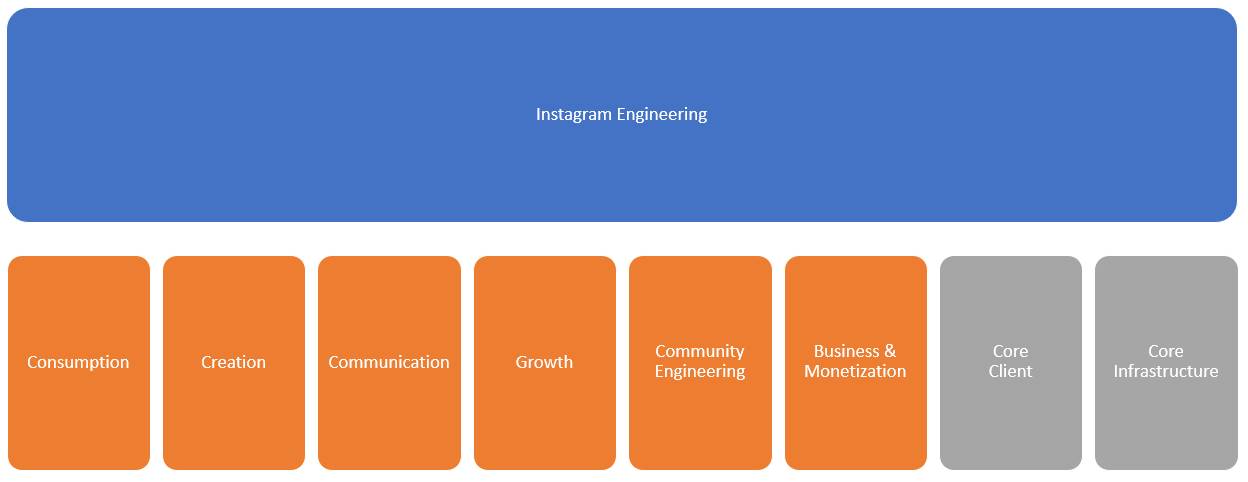Team Pattern #3: The Product Team
It’s time for the next episode in this blog series on team patterns!
It has been slightly delayed, because I got a last-minute invite to present at TCC 2018 (our annual conference for customers and partners) and to host a roundtable there as well. Both great experiences 🙂 You can see a nice photo on LinkedIn where I’m rehearsing together with Christian (our CEO).
But enough about my everyday work and back to the blog series 🙂
This post is about the product team pattern!
At first sight a product team is very similar to a matrix team. You organize a team around a product area and take all the different roles needed to build the product and put them inside this team.
The big difference from a matrix team is that all team members, regardless of their role, report to the same line manager. So it doesn’t matter whether a team member is a designer, frontend developer, backend developer; everybody on the team reports to the same line manager.
The motivation for doing this is to simplify decision making (i.e., the buck stops at the line manager regardless of the functional area) and to encourage people on the team to learn more about the business that the product area serves (as they will work within that area for a long time, rather than on the matrix team, where they are more likely to be moved to a completely new product area).
When Instagram moved away from the technology team patterns, which we saw in an earlier post in this series, they adopted the product team pattern, as you can see in the org chart below:

As you can see in the org chart above, Instagram organized their team around the product areas (such as content creation). To handle general stuff that doesn’t fit neatly into a product area, they added two platform teams: The Core Client team for developing the container (or app shell) that the product teams develop their product areas within, and a Core Infrastructure team that handles servers and other infrastructure.
At Airbnb they have made an interesting variation on this pattern: They let their product teams focus on a specific persona, such as guest or host, instead of more traditional product areas, such as billing or booking. This makes it really easy for Airbnb to establish business-related KPIs for the team.
The line manager in this team pattern is often called an engineering manager to show that it is not a manager for a specific technology area (such as mobile) or a specific discipline (such as QA), but rather a manager responsible for all engineering within a product area.
The product team pattern tends to grow leaders who can bring different disciplines together and make them build a unified product where all the pieces fit nicely together. And it encourages leaders to focusing on building a product that actually solves a business problem. This is also the motivation for many organizations who use this team pattern: It aligns the engineering teams’ success much more closely with the company’s success and it becomes much easier to define a business-related KPI for the team (compared to the technology team pattern).
Another interesting dynamic is that companies, which move away from technology teams and to product teams, is that full-stack developers with a good understand of the product area tend to replace the technical specialists (e.g., experts in one layer of the tech stack) as the rock stars of the development organization.
The reason is that a specialist can only typically build partial features. For example, a Django developer who can develop the backend functionality, but doesn’t not know React so cannot finish the frontend part of the feature.
But the developer will report to a line manager responsible for the whole product area (and not just a single technology) and who is motivated towards shipping whole features, and hence, more likely to reward people who can actually deliver whole features.
This dynamic is further accelerated if the company uses continuous deployment and is in a business where speed to market matters (which is most businesses).
Strengths
An advantage of a product team over a technology team is that the team is much closer aligned with business success. The team will not feel like a success if their product has just flunked a major public review — even if their code is so beautiful that it would make Jon Bentley shed a tear.
In continuation of this, it is also my experience that more and more software engineers no longer really fit the old computer geek stereotype, who just wanted to be left alone and code. Now they also want to see their product succeed in the market and make meaningful contributions towards that. As in the old parable about the three stonecutters, they are no longer satisfied with merely cutting stones, they want to build grand cathedrals!
To an even higher degree than with the matrix team, the product team is more likely to build a unified product and have better collaboration across disciplines and lower the risk of a “us-versus-them” culture.
Another advantage of the product team over the matrix team is that decision making becomes much easier as there is only a single line manager involved when a decision needs to be taken or impediment needs to be escalated.
All this usually really contribute to the team’s ability to iterate very fast and launch new product features quickly; and contributes positive to the team’s autonomy.
A caveat is that many of these strengths may be nullified if the team has strong dependencies outside the team’s control. These dependencies could be organizational (like external reviews or approvals) or technical (like an architecture that is a big ball of mud and any change to the codebase can have side effects anywhere else so all teams must coordinate their work).
Weaknesses
A serious risk with product teams — especially compared to technology teams — is that they may pay less attention to technical excellence.
There can be several reasons for this:
- Engineers may become too focused on market success at the expense of engineering excellence. Especially if there is a strong and opinionated product manager or customer.
- Each team may become a silo (reporting to a single line manager) and there can only be so many senior engineers within a single team. So, for example, if the team only has a single junior Android engineer who will make sure that the quality of his or her code is satisfying? Or making sure he or she knows the best Android blogs to follow?
Similarly, there is also a higher risk of code duplication. That is, several product teams may code the same functionality in their individual codebases (which may or may not be a problem depending on your belief system).
Another risk compared to matrix teams is that it may become more difficult to move people between teams. When an engineer changes team in the matrix, he or she continues with the same line manager. But in product team pattern, he or she will change line manager as well, which may be a major change. So there may be more resistance, both the engineer might like his or her current line manager and not want to change and start all over with a new manager. Plus some manager have empire tendencies and may be less willing to “give away” an engineer for good. The consequence of this may be that the company is not allocating its people to its highest priorities or biggest opportunities.
Another risk compared to technology teams is that recruitment may be tougher. It is easier to explain to an Angular engineer that it would be great to be part of an Angular team compared to being part of a Life Insurance product team. Even with the matrix organization you can tell the engineer that he or she will report to a manager well-versed in that area. You can mitigate this by explaining why this area is interesting from a technical point of view or important to society at large.
Some companies brand their product teams (at least in job ads) as full-stack team, and given it is cool to be a full-stack developer, the thinking is that it will be easier to recruit people for a full-stack team compared to a Life Insurance team.
From a manager perspective, my experience (as having been both a development manager and an engineering manager) is that being an engineering manager is a more demanding job. It is not because the job is difficult from a technical point of view, it is just that the responsibility is broader. You will essentially become a mini VP of Engineering for a small development department.
You will also have a more direct impact on the business, which you cannot shy away from. That is, as a development manager (for a technology team) you can say that the product is perfect from a technical point of view and it is not your fault that it cannot sell. Due to the broader scope of the role there are also many more things that can go wrong. You will be responsible for things outside of your primary area of expertise but will be responsible for them anyway.
Finally, as a manager your technical skills will most likely erode faster than in the other team patterns. You will be responsible for multiple technologies, such as backend, frontend, data — and have people management on top of that. The rapid pace of technological progress only accelerates this; for example, you were an expert in AngularJS and then they release Angular 2 and all your hard-earned skills become obsolete. And this is not only happening in one layer of the stack, but on all layers, so keep up with everything can become pretty tough.
Given this broad scope of responsibility for the engineering manager — from people management to technical leadership — some companies keep the product team but split the engineering manager role into two: One person will be responsible for technical leadership (i.e., a lead engineer) and one person will be responsible for people management (i.e., a people manager).
This pattern, where the engineering manager role is split into two, will be the topic for the next post in this blog series. Stay tuned!

